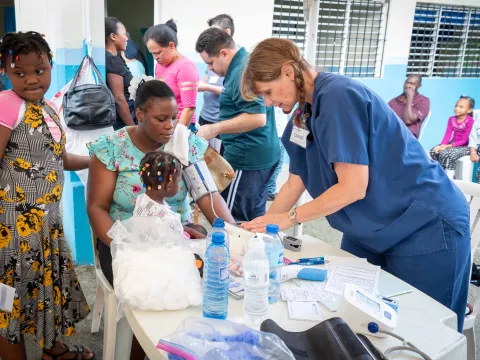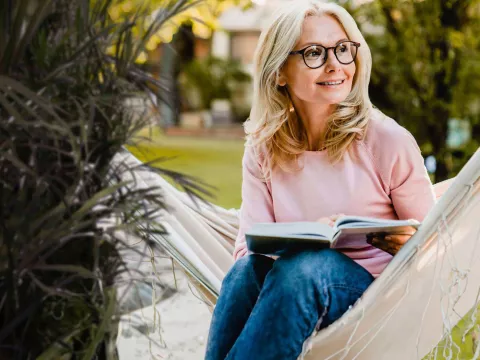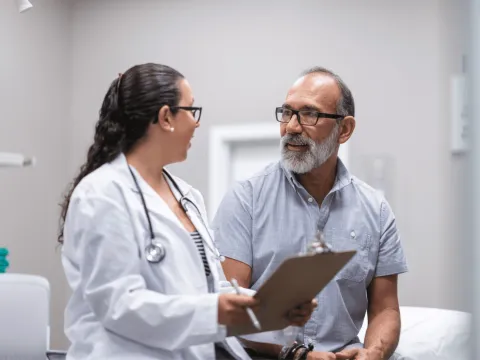- UChicago Medicine AdventHealth

Choose the health content that’s right for you, and get it delivered right in your inbox.
On the fourth day of our mission trip to El Salvador, we set up our medical clinic at the Cooperativa de Pescadores Los Blancos, a fish market of sorts where vendors come to sell their goods. The market is set up on an area of the beach that backs up directly to the ocean. Most of our providers were working on a floor of sand under a roof of straw. It was 92 degrees outside.
The patients trickled in slowly, but we still saw 139 pediatric patients and 207 adults (346 total).
Duct Tape Saves the Day
One of our first patients of the day needed a lot of help from us. The man had gone to a local clinic the week before because he was not feeling well and had been drinking tons of water. They diagnosed him with diabetes and they made an appointment for him to see another doctor… in three months. Someone told him about our clinic, so he decided to come.
We ran a blood glucose on him and it showed a high result of 377, and we could detect a ketone smell on his breath. We started an IV and gave him two liters of fluid and a shot of insulin. There was nowhere to hang an IV bag, so Amanda Travers duct-taped it to a pillar. When we checked his insulin again, his blood glucose had risen to 456 when it should have been decreasing. His heart rate was too high and he was breathing too fast. In America, this patient would be admitted to the Intensive Care Unit immediately. We decided to send him to the closest state hospital, which was an hour away, and we sent Michael Thiede with him. Because Michael brought him to the Emergency Room to explain the situation about how sick he was, the doctors treated him immediately.
A Familiar Face Returns
Last year at this site, Dr. Stephanie Freels treated a young woman with a lesion on her forehead. She’d had it for years, but it wasn’t going away. Dr. Freels quickly diagnosed it as basal cell skin cancer and referred her to the local doctor. Today, she came back to our clinic and saw Dr. Royal McKenna. She told him that she did follow up with a doctor and that she was successfully treated for skin cancer.
“She told Dr. McKenna the story and then she recognized me and came running right over,” Freels said. “She was just beaming and so thankful, and she only had a little scar. She was wearing sunscreen and a baseball cap and she hugged me.”
Replacing Sandwich Bags with Real Medical Supplies
We also saw a man with special needs who came to the clinic last year with his mother. He had two ostomy sites — one had failed and was still draining slightly — and the skin around both sites was extremely raw and broken down. They were using plastic sandwich bags to collect the stool because they couldn’t afford the proper supplies.
Last year, Ann Marie Niemer spent time teaching the mother how to take care of the skin around the sites, and after we went home, Ann worked to collect donated supplies to send to the mother throughout the year. She also had interpreters explain how to use the items by video.
“The skin looked much better and it was great to see the results of what we’ve been doing for the past year,” she said. “We gave them more supplies and will continue to provide some in the future.”
Feet Don’t Ail Me Now
McKenna, one of our residents, treated a man with a foot wound that he sustained when something from a well dropped on his foot. He had had the wound for 12 years now, and it would not heal. Anna Koziol, a clinical educator and wound care nurse, grabbed the supplies she brought and examined the wound. It was from a bypass he had done, and much of it had scarred over, but a small part was still open and draining.
“I was able to dress the wound and give him enough supplies that could probably last him a year,” Koziol said. “I saw a lot of wounds and all they had were gauze on them, and that’s not going to work well. He was very appreciative and really listened to all the instructions.”


